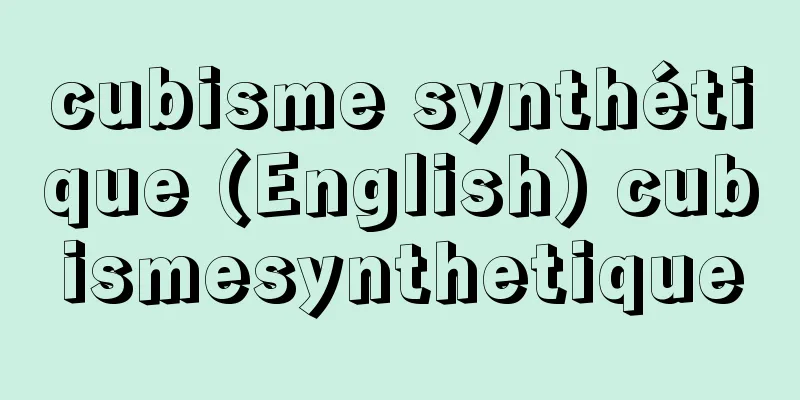Pot - Vase

|
A container with a spherical protruding body and tapered base and neck. A container with a neck that is not very tapered is called a kame. There are various shapes of jars, including those with different curvatures in the upper and lower halves of the body, those with upright lips above the neck, those with outward curving lips, and those that lack a lip at all. [Esaka Teruya] The emergence of the jarThe oldest pots known today are unglazed clay pots. The earliest place where pot-shaped pottery was produced is thought to be the Mesopotamian plains along the Tigris and Euphrates rivers. Wheat cultivation began here around 7000 BC. At the Jarmo site around 6000 BC, barley and two types of wheat were cultivated, and goats were kept as livestock. Pot-shaped pottery with narrow necks was excavated from the Hassuna site and Tell Sarasat during the Hassuna period around 5500 BC. It is thought that pottery with narrow necks developed in areas where the cultivation of wheat and other crops became common around 7,500 years ago as containers for storing grain seeds. Around 5000 BC, agricultural culture spread from the Danube River basin to the Mediterranean coast, and pot-shaped pottery was also produced in this region. In Asia, the red-painted jar-shaped pottery from around 4000 BC of the Yangshao culture that developed in the Yellow River basin is well known, but in recent years the existence of the Cishan-Peiligang culture, dating back to around 5000 BC, which cultivated foxtail millet and millet, has been uncovered, and it has been revealed that this culture contained crude, handmade, low-temperature fired, narrow-mouthed jar-shaped pottery. In the Americas, corn varieties were improved around 2000 BC on the Mexican highlands, leading to the development of an agricultural culture, and around that time spherical or egg-shaped pottery was produced. In the central Andes, neckless jar-shaped pottery appeared around 1000 BC. In the Valdivia shell mound on the Pacific coast of Ecuador, jar-shaped pottery was made around 4000 BC. Dr. Evans, the researcher, said that the patterns on the pottery in this shell mound are similar to some of the Jomon pottery in Japan, and presented the fantastic hypothesis that the oldest pottery culture in South America was made by Jomon people who drifted to the coast of Ecuador on the North Pacific Current. However, this Valdivia pottery is at a fairly advanced stage, and it is predicted that the origin of pottery in South America and the origin of the emergence of jar-shaped pottery go back even further, and it also seems to show that the origin of the emergence of jar-shaped pottery is by no means unified. Pottery also emerged as a boiling utensil for cooking food, mainly pots and deep bowls, and it is thought that with the start of grain cultivation, the need for seed preservation led to the differentiation and development of jar-shaped pottery as a storage container. [Esaka Teruya] Japanese VaseIn the Japanese archipelago, pottery with a shape similar to a wide-mouthed jar appeared at the end of the Early Jomon period, around 3000 BC, while narrow-mouthed jar-shaped pottery with a spherical body appeared in the latter half of the Middle Jomon period, around 2000 BC. Jar-shaped pottery appeared universally in large numbers from the end of the Late to Late Jomon period. From the Early Jomon period onwards in Japan, rudimentary plant cultivation began, but this was not cereals but perilla, mung beans and other crops, likely for the preservation of their seeds. The number of pots increased further during the Yayoi period, and beautiful crimson-lacquered jar-shaped pottery can be seen, which may have been used to store rice seeds over the winter. As time went on, jars of various shapes and decorations appeared, made of a variety of materials including ceramic, wood, bronze, gold, silver, copper, iron, and glass. Their uses diversified, and they were used to store alcohol, medicine, salt, oil, tea, etc. There were also jars with special purposes, such as spit jars for discarding saliva and phlegm, and octopus jars for catching octopus. [Esaka Teruya] [References] | | | |Source: Shogakukan Encyclopedia Nipponica About Encyclopedia Nipponica Information | Legend |
|
胴部が球形に張り出し、底辺と口頸(こうけい)部がつぼまった容器。口頸があまりつぼまっていないのは甕(かめ)という。胴部の下半と上半で曲面の屈曲率の異なるもの、口頸から上部に直立した口唇部をもつもの、外湾した口唇部をもつもの、まったく口唇部を欠くものなど、さまざまな形態の壺がある。 [江坂輝彌] 壺の発生今日知られる最古の壺は粘土でつくられ、素焼にした壺形土器である。壺形土器の発生が世界でもっとも早かったのはティグリス・ユーフラテス両川流域のメソポタミアの平原と思われる。ここでは紀元前7000年ころに麦類の栽培が開始されている。前6000年ころのジャルモ遺跡では大麦と2種の小麦が栽培され、家畜としてヤギが飼育されていた。これに続く前5500年ころのハッスナ期のハッスナ遺跡、テル・サラサートなどからは細い口頸部のついた壺形土器が出土している。いまから約7500年前、小麦などの栽培が普遍的になった地域では、穀類の種子保存容器として壺形土器が発達したものであろうと考えられている。前5000年ころになるとドナウ川流域から地中海岸に農耕文化が伝わり、この地方でも壺形土器がつくられた。 アジアでは黄河流域に展開した仰韶(ぎょうしょう)文化の前4000年ころの朱彩文壺形土器がよく知られていたが、近年、アワ、キビを栽培する前5000年ころにまでさかのぼる磁山(じざん)・裴李崗(はいりこう)文化の存在が明らかにされ、この文化に手作り粗製の低火度で焼成された細口壺形土器の存在することが明らかになった。 南・北アメリカ大陸でも、メキシコ高原では前2000年ころにトウモロコシの品種改良がなされ、農耕文化が興り、そのころ球形ないし卵形の壺形土器がつくられた。 中央アンデス山地でも前1000年ころには無頸壺形土器が現れている。エクアドル太平洋岸のバルディビア貝塚では前4000年ころに壺形土器がつくられ、調査者エバンズ博士は、本貝塚の土器の文様が日本の縄文土器の一部のものに類似しているとし、南米最古の土器文化は北太平洋海流に乗って、エクアドル海岸に漂着した縄文文化人によってつくられたとする奇想天外な仮説を発表した。しかし、このバルディビアの土器はかなり発展した段階のものであり、南米における土器の起源と壺形土器発生の起源はさらにさかのぼることが予測され、また壺形土器の発生の起源も、けっして一元でないことを物語っているようである。また土器は鉢、深鉢を主とした食料の煮炊きの煮沸用具として発生し、穀類の栽培の開始などによって、種子の保存などの必要性から保存用の容器としての壺形土器が分化発生をみたと思われる。 [江坂輝彌] 日本の壺日本列島では縄文時代前期末、前3000年ころ広口壺に近い器形の土器が現れ、体部球形の細口壺形土器が現れるのは中期後半、前2000年ころである。壺形土器が普遍的に数多く現れるのは後期末から晩期である。日本の縄文時代の前期以降では初歩の植物栽培が開始されるが、それは穀類ではなくエゴマ、リョクトウなどであり、これらの種子を保存したものであろう。弥生(やよい)時代に入ると壺はさらに増加し、稲の種もみの越冬保存容器として使われたものであろうか、丹塗(にぬ)りの赤色の美しい壺形土器がみられる。 時代が下るとともに陶製、木製、青銅製、金・銀・銅・鉄製、ガラス製など各種の材料で、さまざまな形態、装飾もつけられた壺が現れる。用途も多様化し、酒の容器として、また薬、塩、油、茶などを貯蔵する容器としても使われた。また特殊な用途としての壺に、唾(つば)や痰(たん)を捨てるための唾壺(だこ)や、タコ漁に使うたこ壺などがある。 [江坂輝彌] [参照項目] | | | |出典 小学館 日本大百科全書(ニッポニカ)日本大百科全書(ニッポニカ)について 情報 | 凡例 |
<<: Tsuboi Gendou - Tsuboi Kanemichi
Recommend
Oji - Prince
...First, the Hoju era name, which corresponds to...
Eddy current brake
Engine braking is a type of braking that utilizes...
Apocrine gland - Apocrine gland
One of the two types of sweat glands in humans. Al...
Onigurumi - Onigurumi
A deciduous tree of the Juglandaceae family (APG ...
Multipath reflection
...The latter type of noise can be reduced by pla...
Hideo Oguma
Poet. Born in Otaru, Hokkaido. After graduating f...
Actor - yakusha
Originally, it was a word referring to people who...
Regula magistri (English spelling)
…In the 5th and 6th centuries, Italy was in the m...
Kirihei the Paper
...This is a performance in which, at the request...
Thunnus atlanticus (English spelling)
…[Shinichi Suzuki]. … *Some of the terminology th...
Castro, G.de (English spelling) CastroGde
...He created a romantic drama of manners called ...
Draper, JW
...This is because science was considered to be s...
Tiananmen Square incident
The First Tiananmen Square incident occurred in 1...
Conjugate fold - conjugate fold
...A fold whose axis is thinner than its wings is...
Applied climatology
A science that studies the relationship between c...









